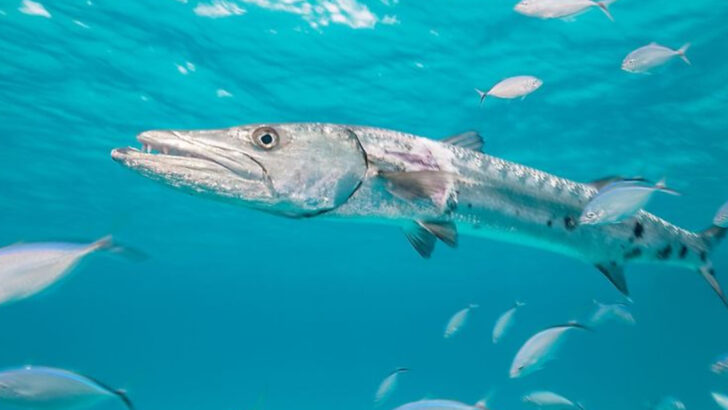The barracuda doesn’t get the respect it deserves.
While everyone’s busy gushing over sharks and orcas, this sleek, silver torpedo is out there slicing through the sea like a blade—fast, fierce, and freakishly effective.
With eyes like a sniper and teeth like a nightmare, the barracuda doesn’t chase. It ambushes. One second you’re a fish minding your business, the next—bam—you’re gone in a silver flash.
And yet, somehow, it still gets overlooked. Maybe it’s not flashy enough. Maybe it’s too quiet. But that’s exactly what makes it such a stunning predator.
This fish isn’t just fast. It’s calculated. It’s eerie. It’s a ghost in the water.
Let’s pull back the curtain and give this underwater menace its due. You’re about to find out why the barracuda might be the most underrated assassin in the ocean.
Lightning Fast Agility

The barracuda’s agility in the water is nothing short of breathtaking. With a sleek, torpedo-shaped body, it can swiftly navigate through coral reefs and open waters alike.
This speed allows it to catch prey with remarkable ease, often before the target even realizes it’s been spotted. Its ability to accelerate quickly makes it a feared hunter among smaller fish.
Imagine the barracuda as the ocean’s equivalent of a fighter jet, maneuvering with precision and grace, leaving the prey with little chance to escape. Its agility is a testament to its evolutionary prowess.
Strategic Ambusher

Barracudas are masters of ambush, using their keen senses and strategic positioning to catch prey by surprise. They often hide among rocks or corals, blending seamlessly with their surroundings.
When the moment is right, they strike with incredible force and precision, often ending the hunt before the prey knows what’s happening.
This method of hunting not only showcases their intelligence but also their patience, waiting for the perfect opportunity to strike. Their ambush tactics are a chilling reminder of their predatory skills.
Razor-Sharp Teeth
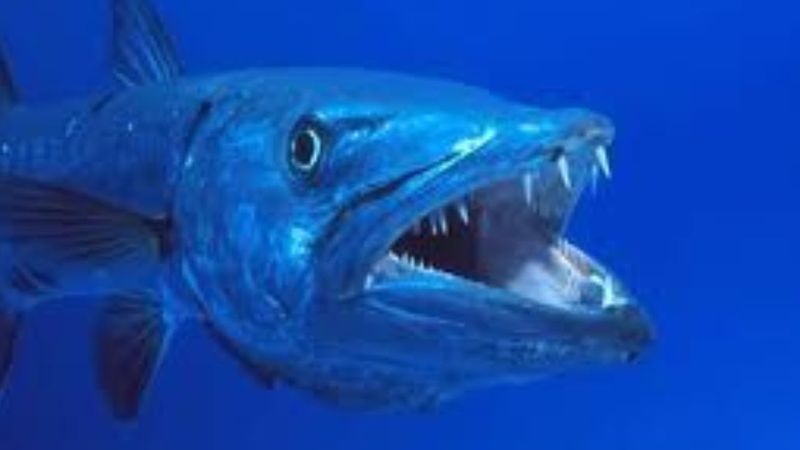
One glance at a barracuda’s mouth reveals rows of razor-sharp teeth designed for slicing through flesh with frightening efficiency. These teeth are perfectly adapted to gripping and tearing apart prey.
Unlike some predators that rely on brute force, barracudas use their teeth to inflict precision damage, ensuring a quick and lethal catch.
Their dental arsenal is not just for hunting; it’s also a tool for defense, deterring potential threats with a fearsome smile. The barracuda’s teeth are a symbol of its mastery as a predator.
Impressive Size and Strength
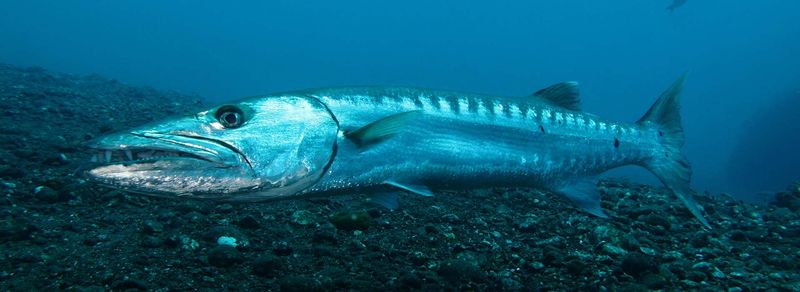
Though not the largest ocean dwellers, barracudas possess an impressive size that commands respect. Their muscular build allows them to exert power and speed in pursuit of prey.
Capable of growing over four feet long, these predators use their size to intimidate and dominate the waters they inhabit. Their physical prowess is matched by their predatory instincts, making them a formidable presence.
The combination of size and strength ensures that few creatures dare to challenge a barracuda, underscoring its feared reputation in the ocean.
Keen Eyesight
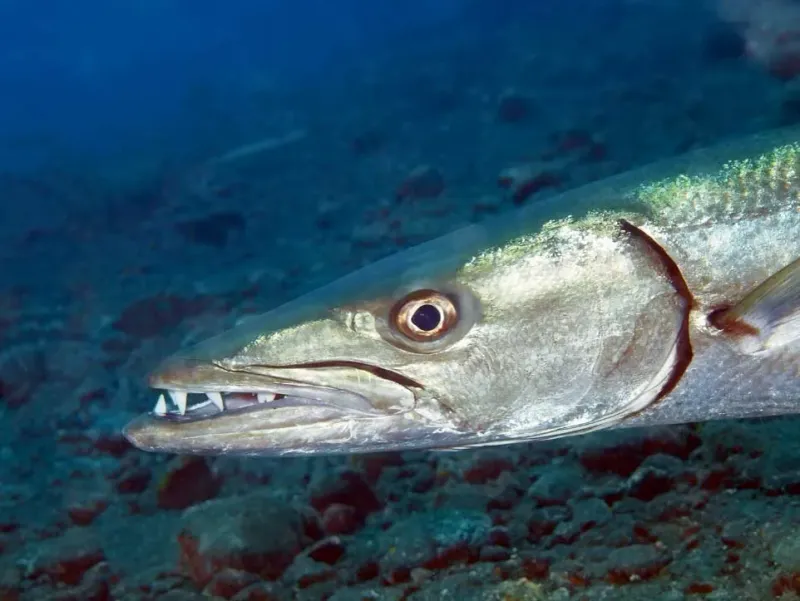
A barracuda’s eyesight is a key component of its hunting prowess. Their sharp vision allows them to detect movement and changes in light, making it easier to spot potential prey from a distance.
This keen eyesight is particularly advantageous in the often murky or dimly lit ocean environment, giving them an edge over less visually adept predators.
By relying on their acute vision, barracudas can track and target prey with remarkable accuracy, making them efficient hunters in a variety of conditions.
Speedy Pursuit
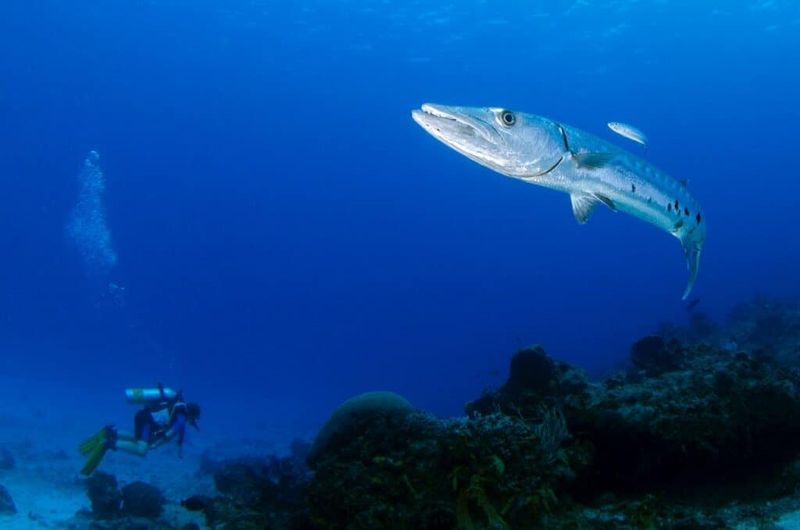
When it comes to sheer speed, the barracuda is a true champion. Capable of reaching speeds of up to 36 miles per hour, it can pursue and overtake most prey with ease.
This incredible velocity is not just for the chase; it also aids in quick escapes from potential threats. The barracuda’s speed is a crucial element of its survival strategy, both as a hunter and a survivor.
In the ocean’s vast expanse, being fast is often the difference between life and death, and the barracuda excels in this arena.
Adaptable Diet
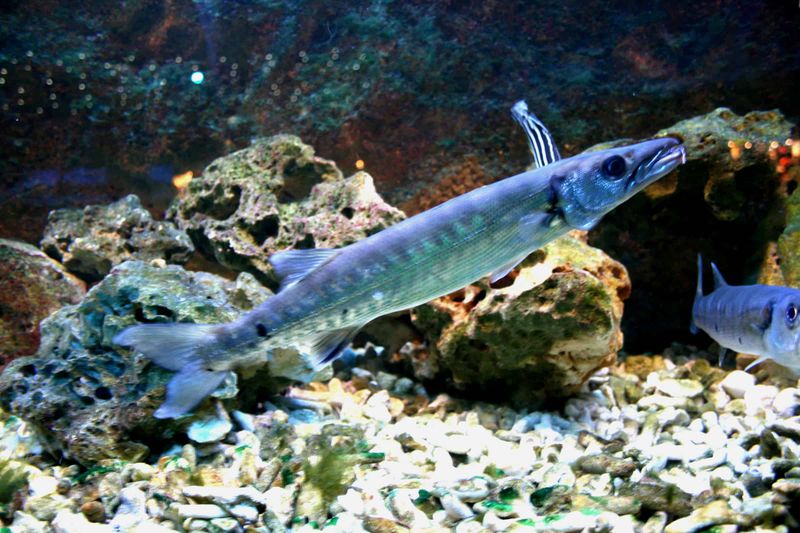
Barracudas are opportunistic feeders, adapting their diet to the available prey in their environment. From small fish to crustaceans, they are not picky eaters.
This adaptability ensures they can thrive in diverse marine habitats, from coral reefs to open seas. By not relying on a single food source, barracudas maintain their position as top predators, capable of adjusting to changing conditions and prey availability.
Their varied diet is a testament to their resilience and ability to survive in the ocean’s dynamic ecosystem.
Solitary Hunters
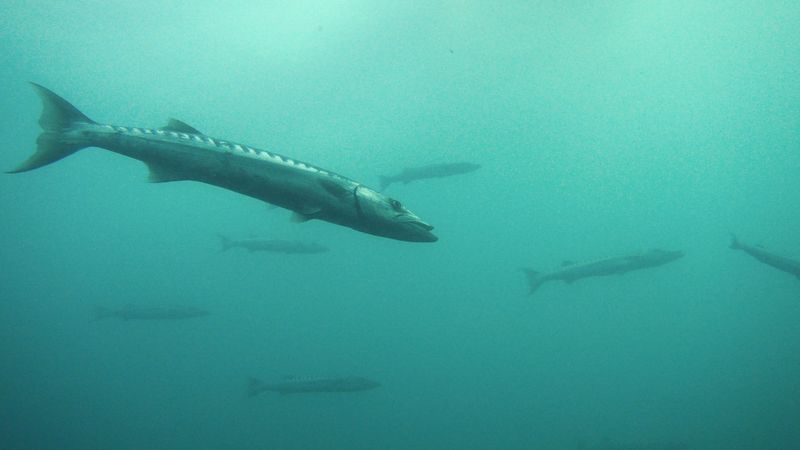
Unlike many marine predators that hunt in packs, barracudas prefer the solitary life. This independence allows them to rely solely on their skills and instincts.
Hunting alone means they avoid competition with others, maximizing their chances of a successful hunt. It also highlights their confidence and capability to single-handedly take down prey.
The solitary nature of the barracuda adds an aura of mystery and intrigue, as it navigates the ocean depths as a lone hunter. This independence is key to its success as a predator.
Territorial Nature
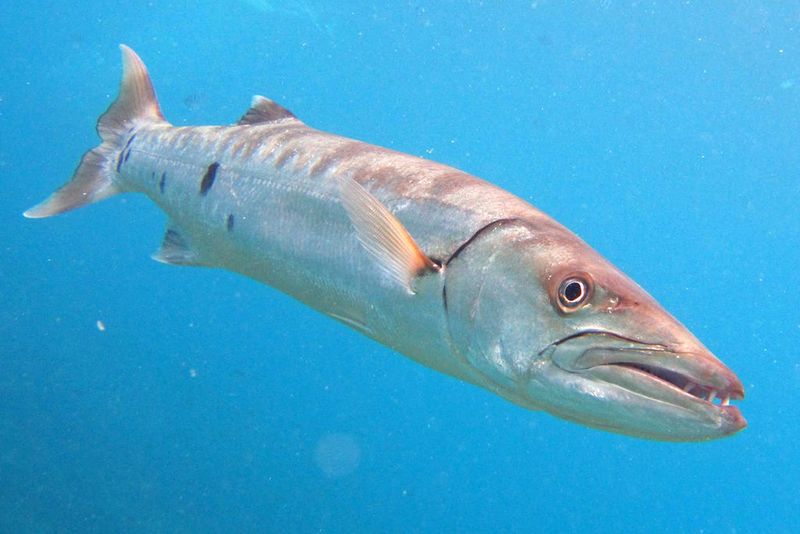
Barracudas are known to be fiercely territorial, protecting their chosen hunting grounds from intruders. This assertiveness ensures they have ample access to food and resources.
Their territorial behavior is marked by displays of their impressive size and speed, often deterring other creatures from encroaching. By maintaining a well-guarded territory, they secure their status as dominant predators.
This territorial instinct is not only about aggression but also about survival, ensuring that they remain at the top of the food chain in their habitat.
Efficient Energy Use
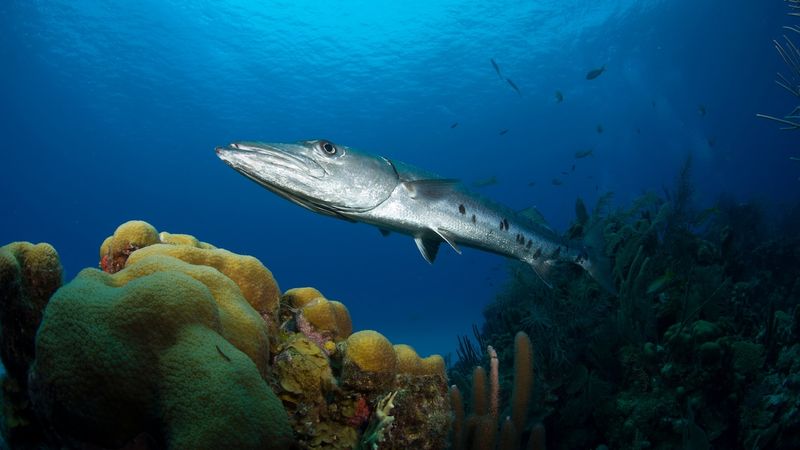
Barracudas are masters of energy conservation, moving with a grace that requires minimal effort. This efficiency is crucial for long hunts and unexpected challenges.
By conserving energy, they can maintain their high-speed pursuits when necessary, ensuring they are always ready to strike. This balance of energy use allows them to survive in environments where resources can be scarce.
Their ability to remain poised and ready, while expending minimal energy, showcases their evolutionary adaptation to life as a top predator.
Vigorous Breeding
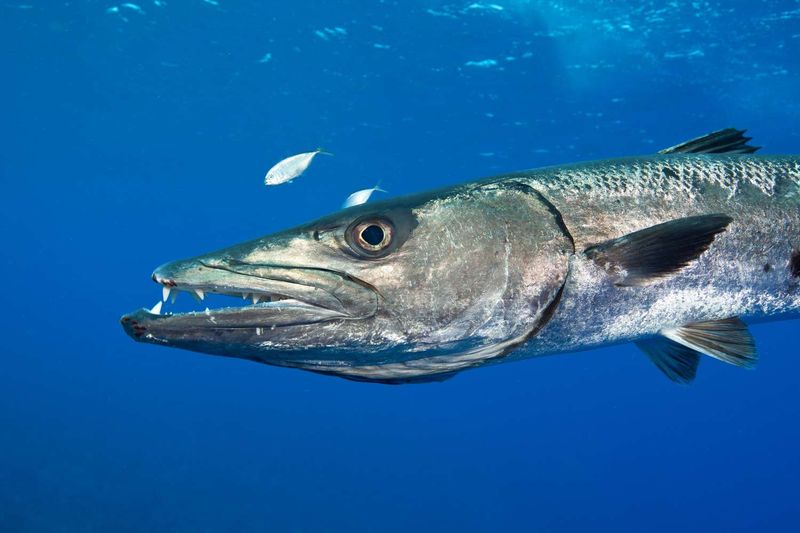
Reproductive success ensures the continued survival of species, and barracudas are no exception. They engage in vigorous breeding, with females capable of releasing thousands of eggs at a time.
This high reproductive rate increases the chances of offspring survival, perpetuating the barracuda’s lineage. It also ensures they remain a constant presence in their marine habitats.
The species’ successful breeding strategies contribute to their resilience, enabling them to adapt to environmental changes and maintain their role as key predators in the ocean.
Fearless Attitude
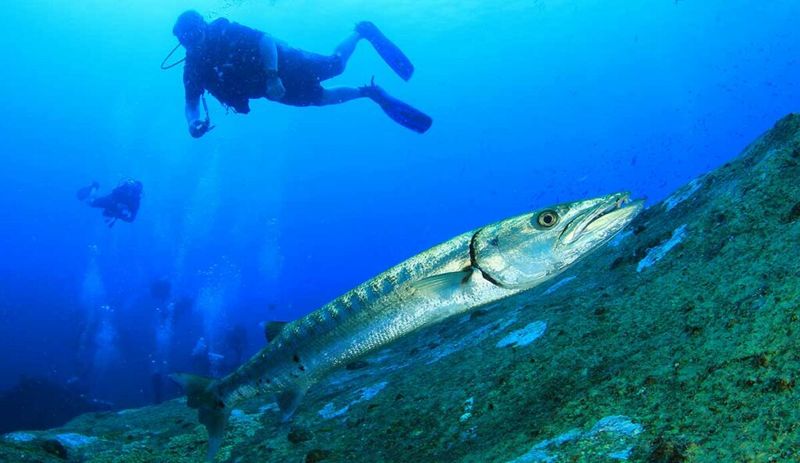
Barracudas possess a fearless attitude, often approaching humans and larger sea creatures without hesitation. This confidence is a testament to their role as apex predators.
Despite their fearsome reputation, they are rarely aggressive towards humans unless provoked. Their boldness is more about curiosity and assertion rather than hostility.
This fearless nature ensures they command respect in the marine world, as they navigate their environment with assuredness and authority.
Complex Social Signals

Though often solitary, barracudas can engage in complex social behaviors when necessary. They use body language and subtle signals to communicate with one another.
This ability to convey messages and intentions helps them navigate social interactions, whether establishing dominance or during breeding.
Understanding these social cues is vital for their survival, allowing them to coexist or compete with other marine life efficiently. Their social intelligence adds another layer to their capabilities as predators.
Perfectly Evolved Design
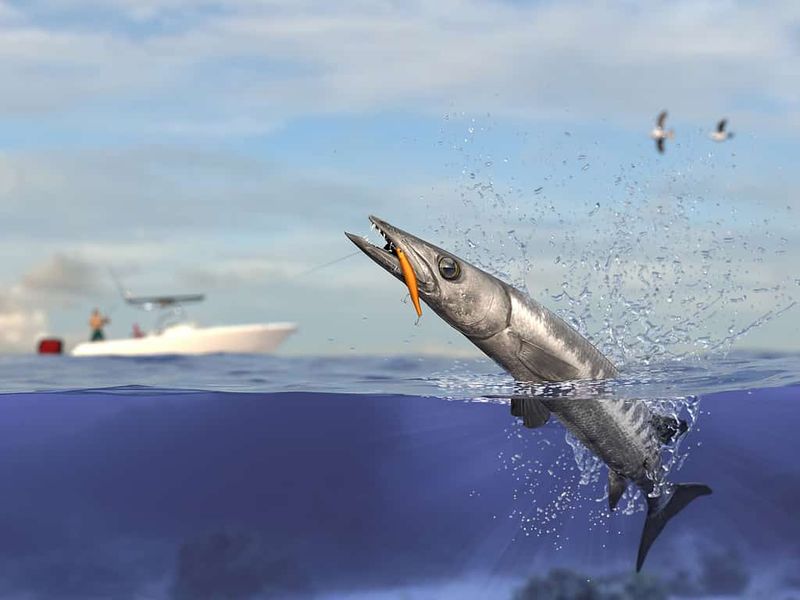
The barracuda is a marvel of evolutionary design, its body perfectly adapted for life as an ocean predator. Streamlined and muscular, it moves with minimal resistance, conserving energy while maintaining speed.
Its sharp teeth, keen eyesight, and agile form are the culmination of evolutionary refinement, ensuring it remains an efficient hunter. This design allows it to thrive in various marine environments.
The barracuda’s evolutionary success story is a testament to nature’s ingenuity, perfectly balancing form and function in one of the ocean’s top predators.
Role in Ecosystem
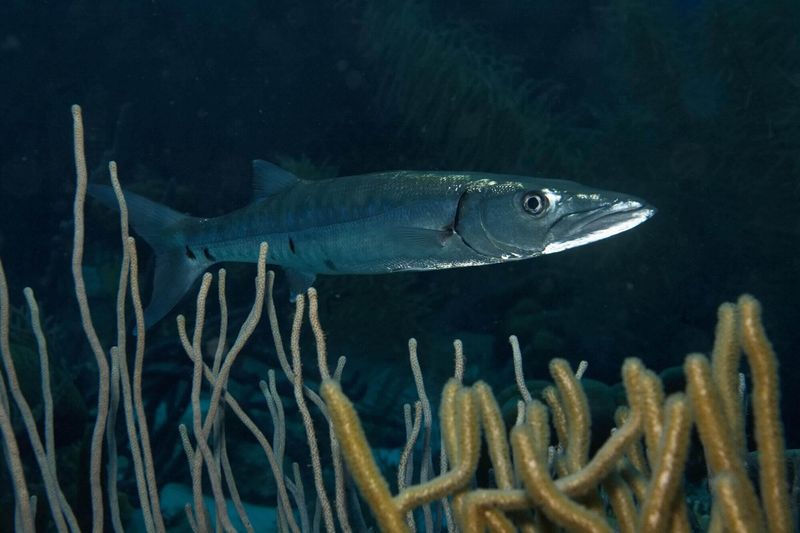
Barracudas play a critical role in maintaining the balance of marine ecosystems. By regulating fish populations, they help ensure the health and diversity of coral reefs and other habitats.
Their predatory activities prevent the overpopulation of certain species, supporting a balanced and thriving ecosystem. This role highlights their importance beyond just being formidable hunters.
Understanding the ecological impact of barracudas underscores their value in the ocean, reminding us that even feared predators have a vital role to play in nature’s complex web.

